Field Crop Update July 15, 2022
Erik Smith, Area Field Crop Specialist
Central New York Dairy and Field Crops
1. Field Observations
Corn is anywhere between V8-V12, and so far, foliage looks clean. Still quiet (so far) on the pest front, but we are at a critical stage for yield determination. We cannot afford a lack of rain at this point. We have been largely spared from the drought conditions we're seeing in other parts of the state. However, we're on track for above-normal temps through the rest of summer, and a slight chance of above-normal precipitation. We need the rain to outpace temps, but we may not get there. Stay tuned:
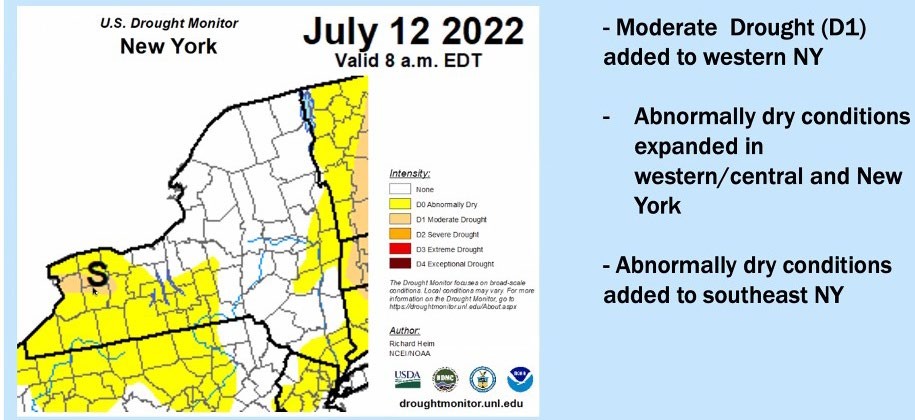
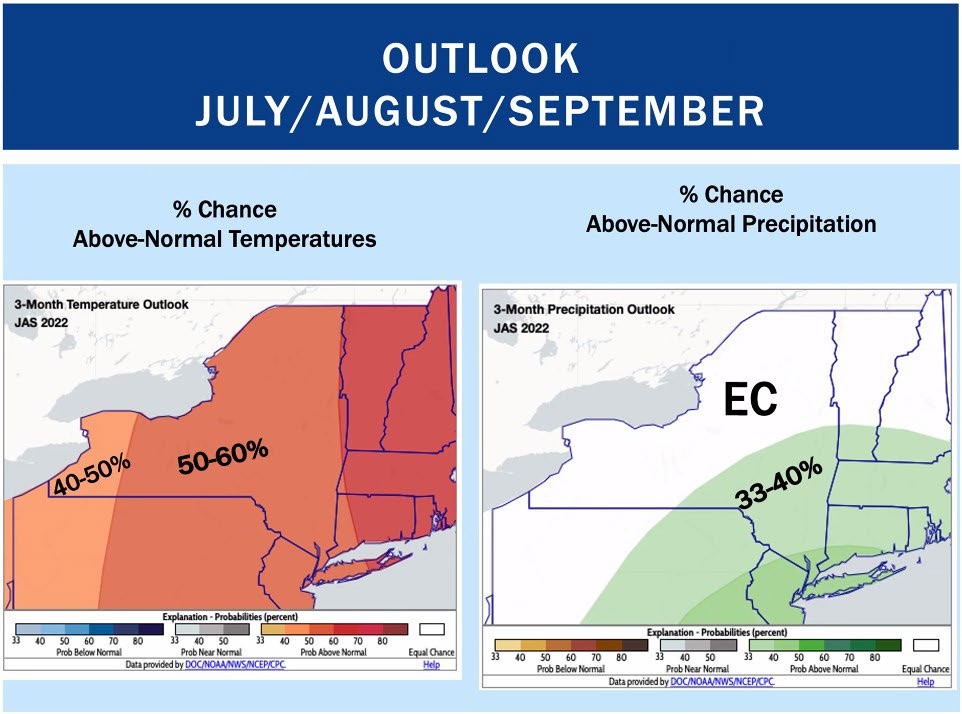
2. Growing Degree Days as of July 14th (See: Climate Smart Farming Growing Degree Day Calculator)
Growing degree days (GDD) are calculated by taking the average daily temperature and subtracting the base temperature for development of a given organism ((High + Low)/2 - base temp = GDD). For corn silage, we are using base 50/86, as corn development starts at 50 degrees F and ceases above 86. Check your location and planting date:
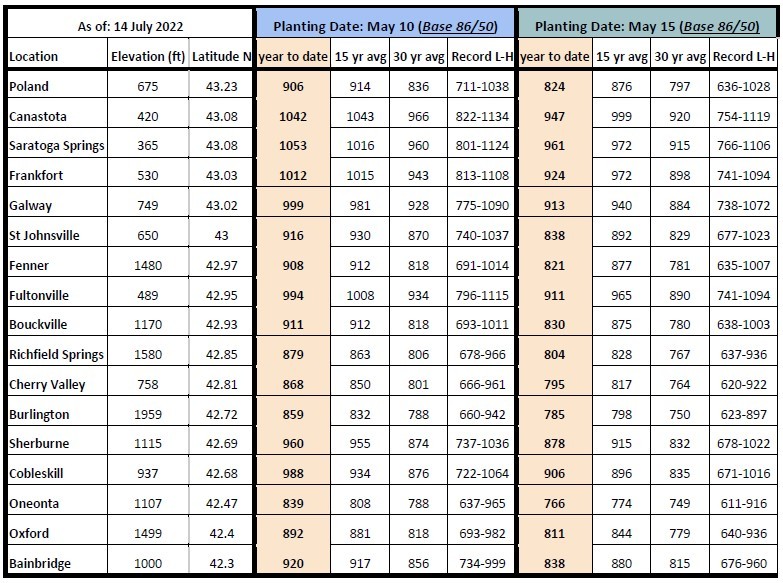
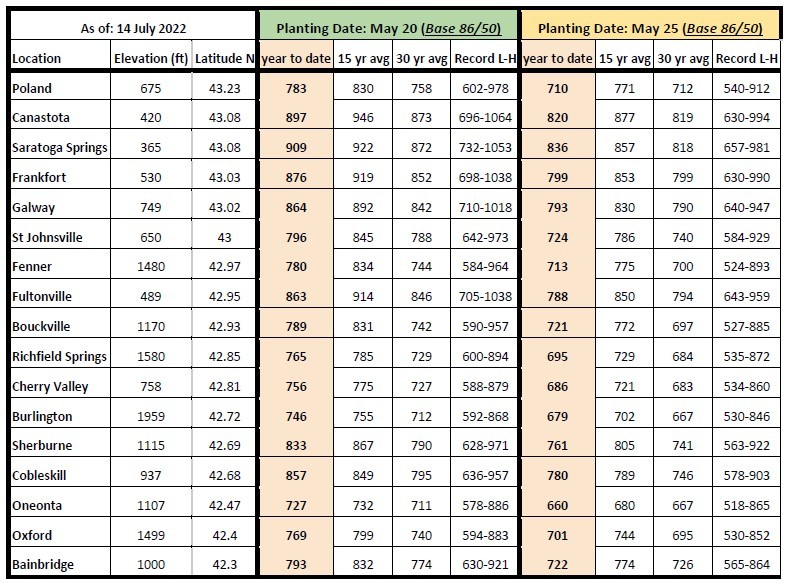
Our forecast for GDD next week looks very warm (Avg daily temps in the mid-70s). We also have storms in the forecast, but we'll need more than hit-or-miss downpours:
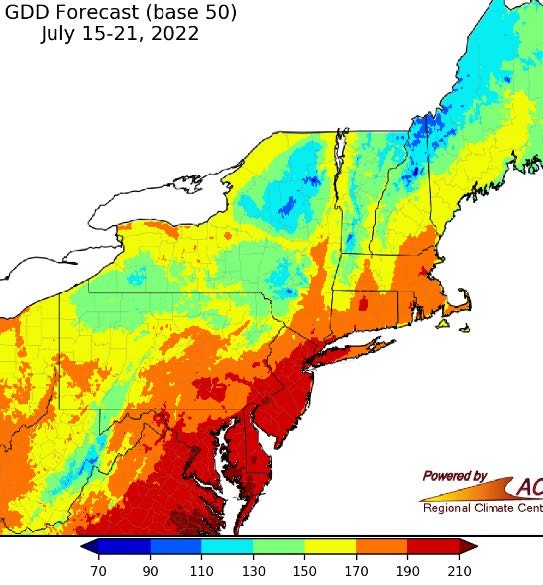
3. Pest and disease monitoring
A. Western bean cutworm (WBC), true armyworm (TAW) and fall armyworm (FAW) in corn.
This week, insect numbers remained low. At tasseling, the window of risk for WBC largely closes:
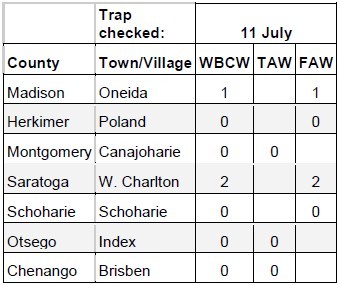
B. Potato leafhopper in alfalfa. The only field that reached threshold is due for harvest (and may be harvested as I type):
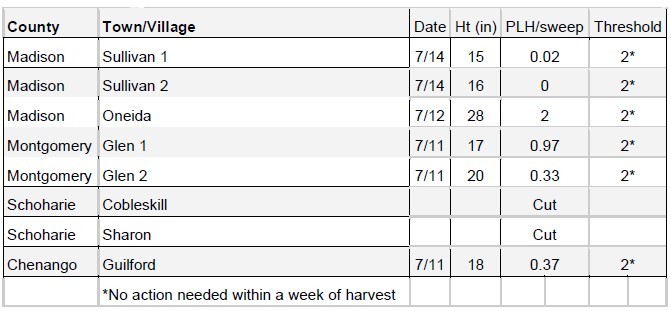
C. White mold in soybean
If your crop is flowering and you're approaching canopy closure (see pic), risk of white mold is currently moderate.
This pic is a screencap taken from the SporeCaster app, showing canopies at high risk (over) and no risk (under) for white mold. Download here.
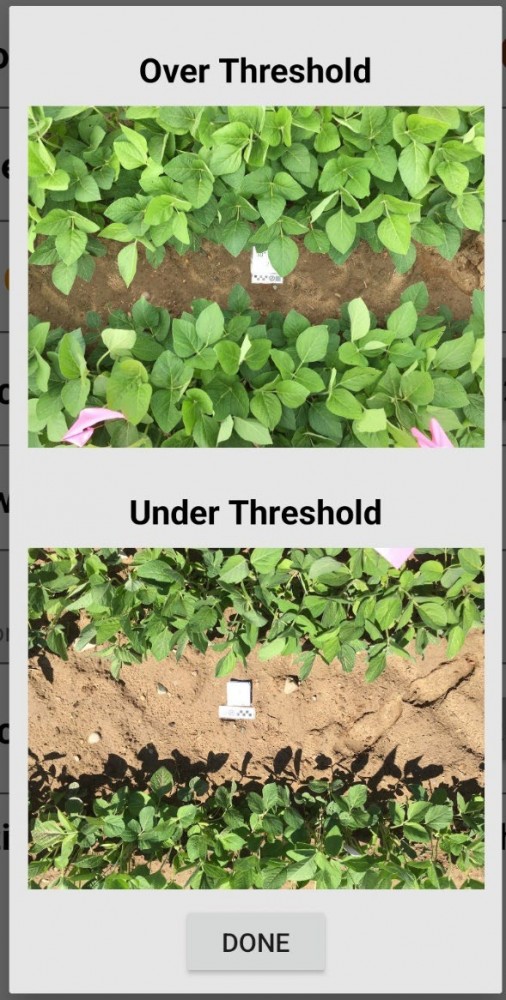
Field Crop Update July 15, 2022 (pdf; 846KB)
Upcoming Events
New York State Fiber Conference
June 9, 2024
Bouckville, NY
Theme for this year: Quality Matters
Announcements
Cash Rent and Custom Harvest Survey
To date, there is limited information available about rental rates and fees for crop harvesting. Farms can use this valuable information for their farm business planning to help improve decision making and profitability.Farmers Can Join MeatSuite For Free!
MeatSuite.com is a free resource provided by Cornell University where NY meat farmers can create a farm profile and list their bulk (wholes, halves, quarters) and bundled (i.e. Grilling Bundle) meat products.Why should farmers join?
1. It's free and easy!
2. Connect with more local customers. In the past year the MeatSuite.com farm directory had 8,300 visits from New York consumers. Farm profiles get as many as 25 views per month from potential local customers. We also spotlight MeatSuite farms on social media and bring attention and purchases to farms through highlights and giveaways.
How do I join?
Farmers can visit https://www.meatsuite.com/farmers/ to create a free farm profile. You must list at least one product for your farm's profile to go live. You'll also have access to Cornell's free Meat Price Calculator, a helpful tool for pricing your meat to make a profit.
While you're on MeatSuite, check out the "Creating Consumer-Friendly Bulk Meats" publication on the log-in page. It has tips on how to create bulk meat products that are easier for first-time buyers to say "yes" to.
If you have any questions as you create your farm profile or products, we're here to help! Please email Matt LeRoux at mnl28@cornell.edu.




